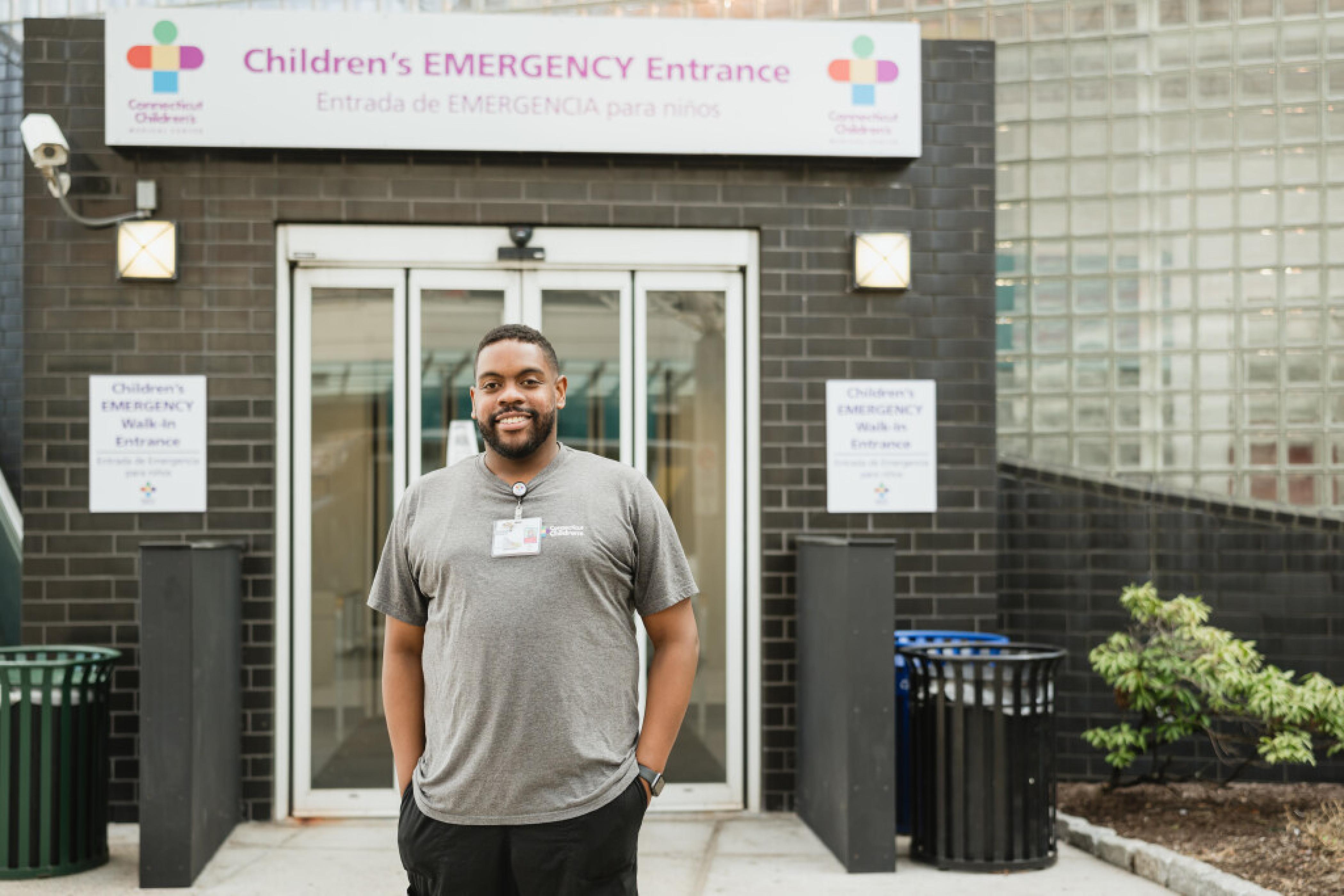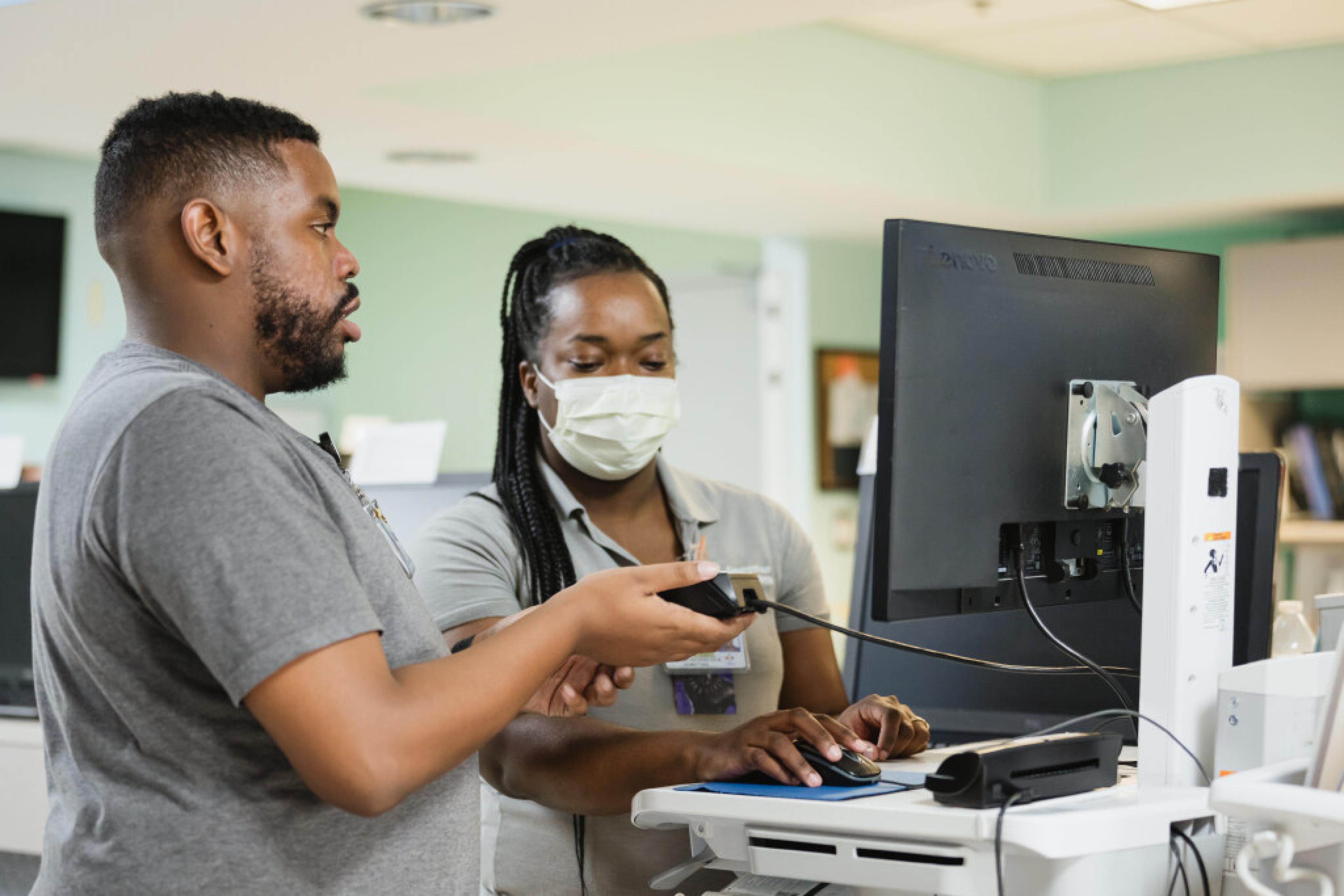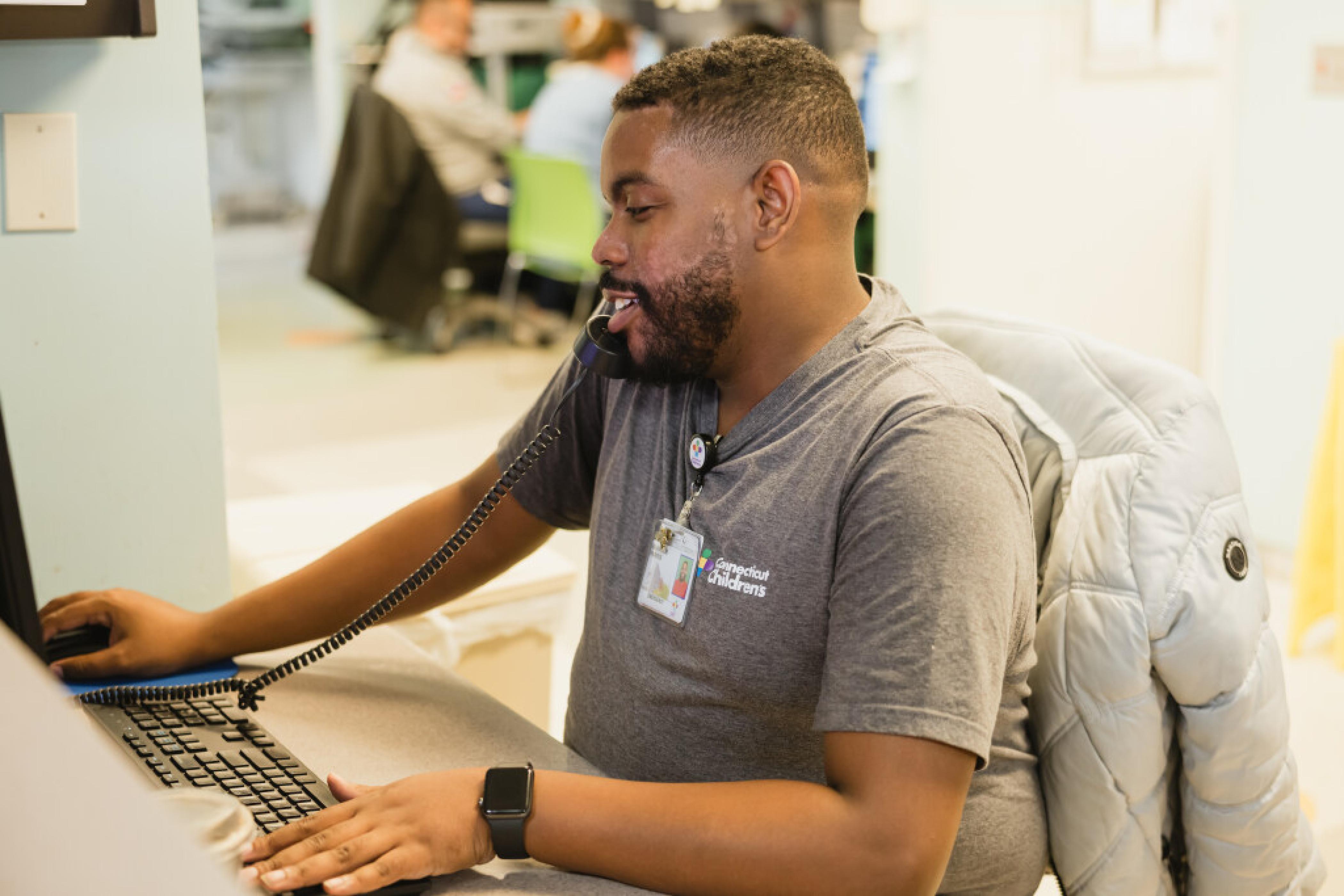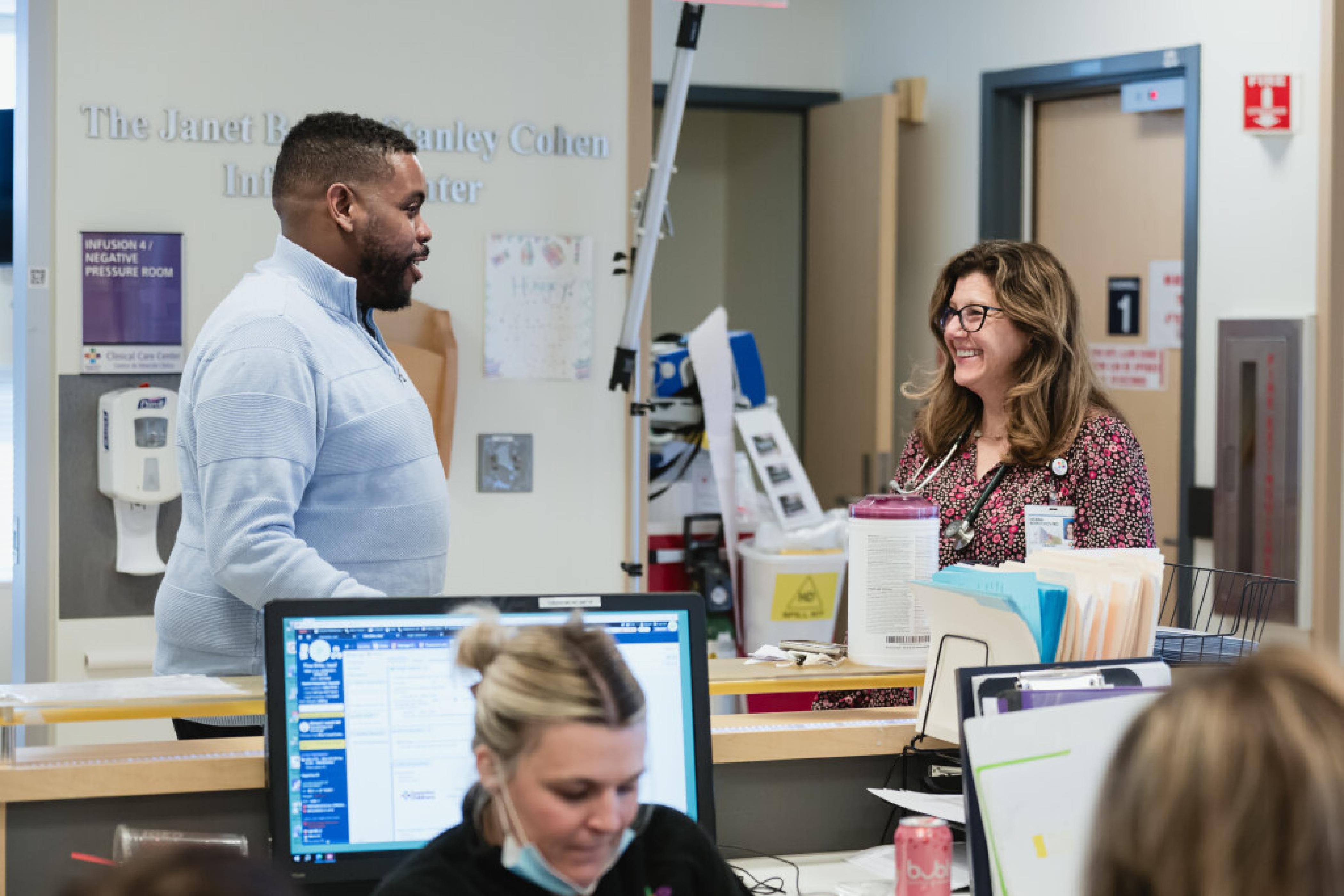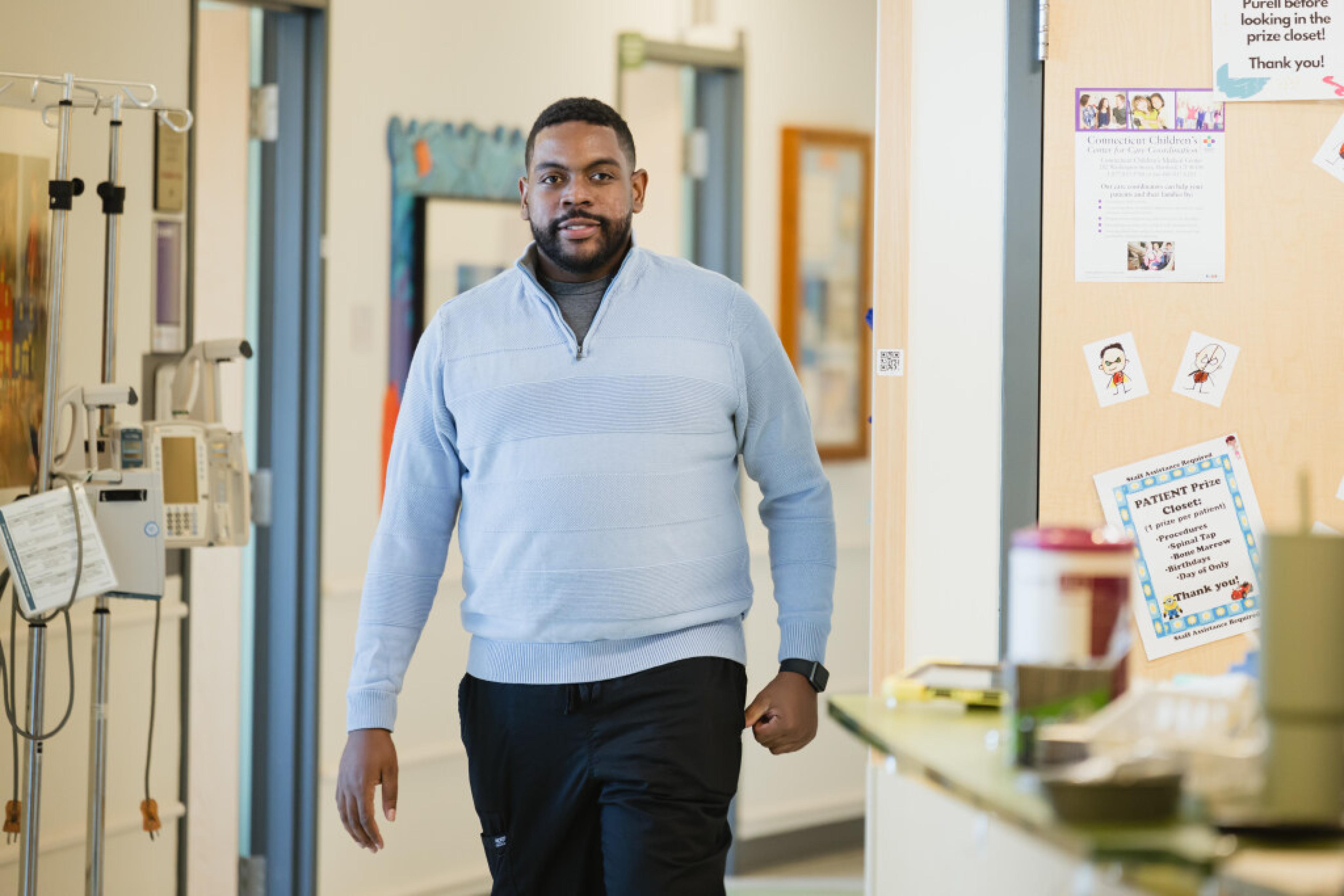He might have sickle cell, but sickle cell doesn't have him.
Brandon admits that as an adult living with sickle cell, he still faces some challenges. He gets bouts of tiredness, and has low hemoglobin at times, and pain every now and then. He does, however, manage at home most days with a medication routine, staying hydrated and treating pain areas with heat or massage.
Brandon’s instinct serves him well: he has a firm grasp on what he can treat at home, and what might need a little extra medical attention. He did need two hip replacements as an adult, in addition to the four surgeries he had as a preteen and teenager at Connecticut Children’s.
But none of this stops him from doing anything he sets his mind to.
Faith is central to Brandon and to his family—and he has been to church every Sunday since he was a kid. “He is thankful for his faith in God; it’s helped him immensely,” recalled Brandon’s dad, Trevor. Also central to their family life was Brandon's late mom, with whom Brandon had an incredibly special relationship until she passed away when Brandon was 11 years old. "Everything Brandon did in life, he did for his mom," said Trevor, "Without her support initially, it would have been much tougher."
“I’m amazed and grateful for all the strength Brandon has shown. He has a passion for helping people—and he is appreciative for what has happened and where he is now. I’m also thankful for his medical team, especially the wonderful nurses and doctors who really listened carefully to how he was feeling. He’s truly come full circle by ‘giving back’ to Connecticut Children’s.”
“Equally vital to Brandon is his support system of friends he can lean on for a good laugh or cry. The people in his life encourage him to try out-of-the-box things. Among them have been axe throwing, parasailing, scuba diving, helicopter riding and zip-lining. Mix in a little rock climbing, off-roading and swimming with the dolphins in Atlantis.
I don’t want sickle cell to control me. I want to control my life. In my driver’s seat. In my black Jeep,” proclaimed Brandon.
“When people hear ‘sickle cell,’ they think life is over, especially parents of young children. You can thrive with sickle cell and be OK. I want everyone to know that.”

